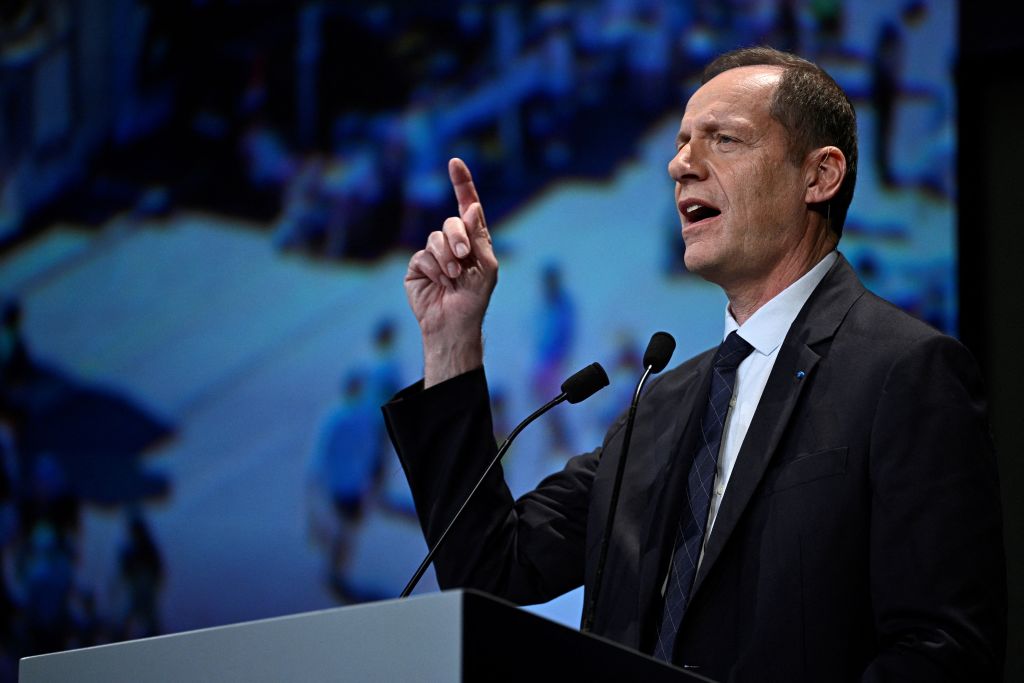'We must do everything we can to preserve the beauty of France' – How the Tour de France is cutting carbon emissions
Green fan transport, electric cars and carbon offsetting all form part of race's bid to reduce carbon footprint by 50% by 2030

Despite the environmentally-friendly reputation of cycling as a pastime and transport method, professional racing has been far from green, with cars, buses, trucks and planes all in heavy usage throughout the year.
Some race organisers and teams are making efforts to cut their carbon footprints, with Tour de France organisers ASO among those doing so.
ASO is aiming for the Tour to meet the UN's Paris Agreement goal of reducing carbon footprints by 50% by 2030, with the race seemingly on track, according to L'Equipe.
Between 2013 and 2021, the race reduced its CO2 emissions by 37%, with ASO corporate social responsibility and coordination manager Karine Bozzacchi confirming the figure is now at 40%.
"This reduction corresponds to our direct emissions, that is, the areas over which we have control – the organisation, the teams, the management, our partners, the media, and our service providers," she told L'Equipe.
"The 40% figure includes the third scope, which concerns indirect emissions from spectators and internet users. They have decreased thanks to the introduction of special trains and shuttles on the stages, carpooling, and bicycle travel."
The reduction is "an incredible signal", said Maël Besson, an expert in the ecological transition of sport, noting that organisers of major events such as the Tour "are watched, copied, and shape the benchmarks for organisers, disciplines, and the general public alike."
The latest race content, interviews, features, reviews and expert buying guides, direct to your inbox!
Indeed, this year, ASO is encouraging spectators to travel to the race using sustainable transport methods, having launched a campaign named 'Come in Green Mode'.
French regions hosting 18 of the race's 21 stages will be adapting transport services offering special train fares and increased train services "to help spectators get as close as possible to the action, in a greener and more sustainable way", ASO announced. The Tour has also launched a carpooling platform to encourage ridesharing on the way to the race.
French WorldTour team Decathlon AG2R La Mondiale have also worked with the Tour on a 'L'Avenir à vélo' campaign, setting up bicycle parking areas at the start of every stage of the Tour. The programme aims to make it easier for spectators to ride to stage starts, offering 120 parking spaces each day and 1,000 for the Grand Départ in Lille.

Tour de France director Christian Prudhomme said that the race "thrives on the beauty of France", emphasising the importance of protecting the environments the race passes through each summer.
"We must therefore do everything we can to preserve it," Prudhomme told L'Equipe. "The consequences of climate change also explain our commitment to reducing our CO2 emissions.
"When, in 2022, we see that the Alps look like the Gard because of the heatwave and the fires – it's really scary. So, it's important to set an example. Even if decarbonisation never happens as quickly as we'd like, there is real progress and a real awareness."
The green efforts extend beyond the organisation, too, with several teams driving all-electric vehicles this July – Picnic-PostNL, EF Education-EasyPost, Uno-X Mobility and Decathlon AG2R La Mondiale – in addition to ASO, which has used electric Skodas at the race since 2020 and provide a mobile charging station for teams.
Beyond the Tour's rolling fleet of cars, the caravan – the convoy of loud and bright advertising vehicles that drives the route several hours ahead of the race – has also gone greener.
30% of the vehicles in the caravan use electric or hybrid power, reports L'Equipe, a figure Prudhomme called "significant progress". In addition, the goodie bags and treats thrown to spectators – reduced by almost half since 2018 – are required to use wood and paper rather than plastic, with a push for local manufacturing to boot.
Prudhomme also noted that the Tour offsets its carbon emissions, working with the CNPF (National Centre for Forest Property) to plant trees adapted to the climate "as close as possible to the routes used by the Tour".
"I cannot guarantee that we will achieve it," Prudhomme said of the Tour's goal to reduce emissions by 50%. "But I can assure you that we will do our best."
The Tour de France is the biggest race in cycling, and a Cyclingnews subscription offers you unlimited access to our unrivalled coverage. Get all the breaking news and analysis from our team on the ground in France, plus the latest pro tech, live race reports, and a daily subscriber-only newsletter with exclusive insight into the action. Find out more.

Dani Ostanek is Senior News Writer at Cyclingnews, having joined in 2017 as a freelance contributor, later being hired full-time. Her favourite races include Strade Bianche, the Tour de France Femmes, Paris-Roubaix, and Tro-Bro Léon.
You must confirm your public display name before commenting
Please logout and then login again, you will then be prompted to enter your display name.
